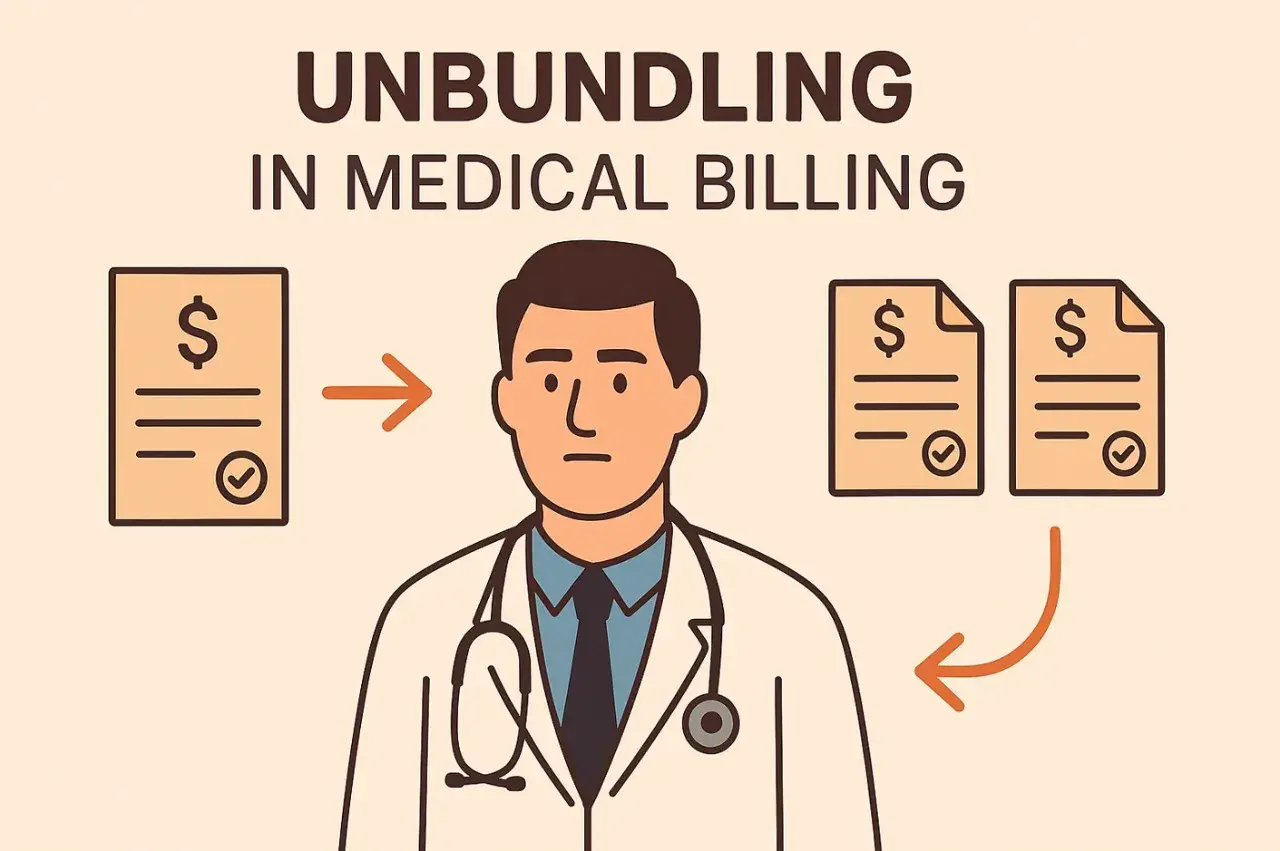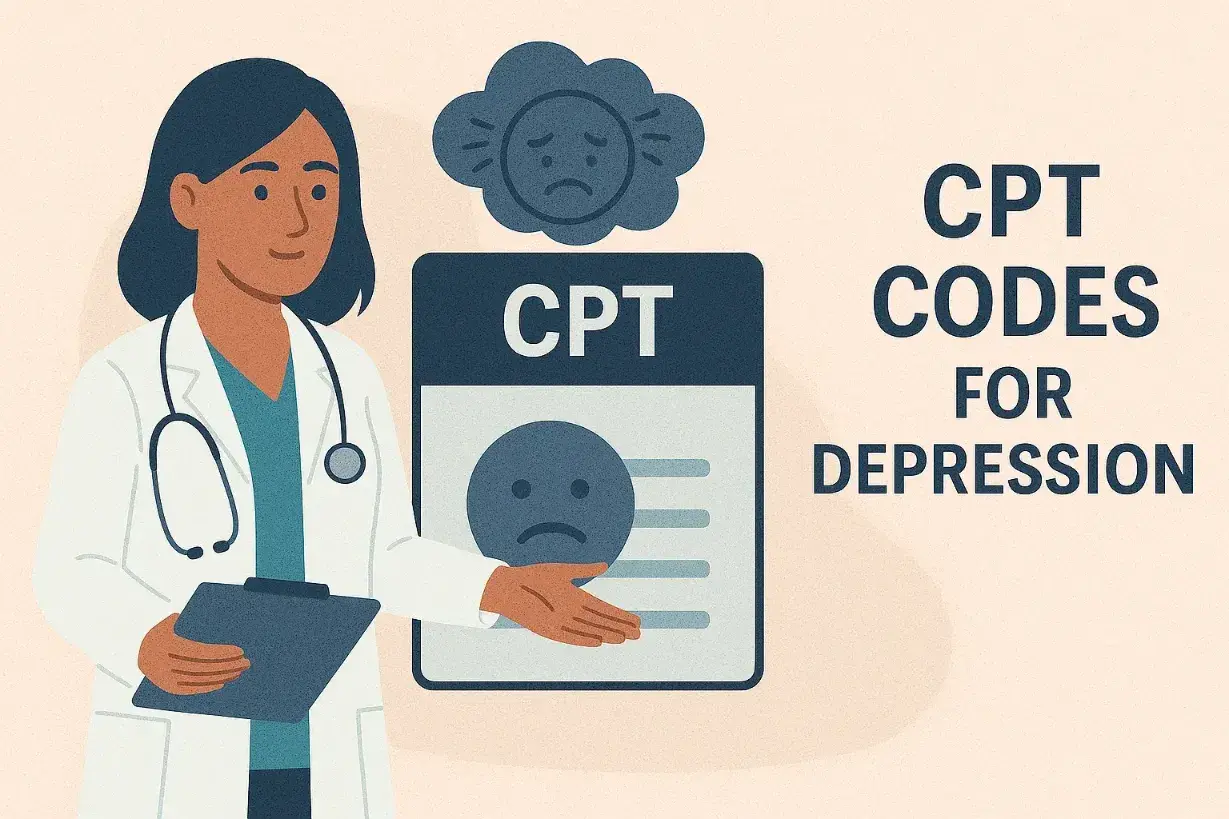Table of Contents
ToggleThis article will explain when you should use modifier 90, how to properly bill for these services, and which documentation details you must include.
What Is Modifier 90?
Modifier 90 is a CPT modifier that should be identified by adding modifier 90 to the usual procedure number for a lab service. It is used when laboratory procedures are performed by an outside or reference laboratory, and the physician or clinic reports the service.
Although the ordering provider initiates the test and receives results, the actual testing component is performed by a reference laboratory. According to Medicare guidelines, independent clinical laboratories may refer specimens for further testing and report those services with modifier 90.
The procedure may be identified when the reference laboratory does not bill the payer directly. Instead, the ordering entity—the physician or other qualified health care professional—submits claims on the laboratory’s behalf.
When Should Modifier 90 Be Used?
Correct Use
Modifier 90 is applicable when:
- A specimen from another lab is received and processed by a reference lab
- The lab that receives the specimen performs one or more tests on such specimen
- The billing laboratory (or clinic) submits claims for the services performed externally
- The purchase price of the test is included in the billing
- Item 20 on the CMS-1500 form is marked “Yes”
- Item 32 includes the CLIA number, name, and address of the independent laboratory
- There are two CLIA identifiers: one for the billing provider and one for the reference laboratory
Example Scenario
A physician draws blood from a patient and sends it to another lab for a comprehensive laboratory test. The testing is performed by an outside laboratory, but the physician or clinic bills the payer. In this case, the 90 modifier must be appended to the CPT code.
When Not to Use Modifier 90
Understanding where modifier 90 is used—and where it is not—is key to compliant billing.
Do not use modifier 90:
- With anatomic pathology codes
- For drawing fees such as CPT 36415. These cannot be referred to another lab
- On handling codes like CPT 99000 and 99001
- When the reference laboratory bills the payer directly
Incorrect use may result in claim denials, audit risk, and loss of revenue. Always identify the correct use scenario to avoid incorrect submissions.
Documentation and Billing Guidelines
To properly submit claims with modifier 90:
- Confirm the laboratory test was performed by an outside entity
- Clearly mark the claim to reflect this outside laboratory arrangement
- Add the modifier 90 to the usual procedure code
- Ensure all required fields are complete, including CLIA data and location of service
- Track which services are referred to a reference lab and bill them separately from in-house testing
Entity and Provider Enrollment Notes
- A qualified health care professional must be enrolled with payers to submit these services
- In some states, only independent labs or hospital outpatient labs may bill certain specialty tests
Understanding Reference and Referring Laboratories
- A referring laboratory sends specimens to another lab and performs one or more internal steps
- A reference lab performs one or more tests on a specimen from another lab
- Modifier 90 must be used if the billing entity is different from the reference laboratory
About 30 percent of the clinical laboratory services billed by outpatient settings are performed externally. Therefore, understanding these distinctions is critical.
FAQs About Modifier 90
What is Modifier 90 used for in medical billing?
Modifier 90 is used to indicate that laboratory tests performed for a patient were carried out by a reference laboratory and not in-house.
When should I use Modifier 90?
Use it when your provider orders a clinical laboratory test, and the test is sent to a reference lab that performs the analysis.
Can Modifier 90 be used for all laboratory services?
No. It cannot be used for CPT 36415, pathology, or services that cannot be performed by an outside lab.
How should claims with Modifier 90 be submitted?
Make sure to include CLIA details, mark Item 20, append the modifier properly, and indicate the correct billing laboratory.
What happens if I don’t follow the correct use of Modifier 90?
It can result in claim rejection or overpayment audits. Follow the guideline and double-check claim fields before submission.
Need Help Billing with Modifier 90?
Navigating the rules for reference lab billing can be complex. At Swift Medical Billing, we help providers, clinics, and independent clinical laboratories simplify their revenue cycle and avoid denials.
Let us manage your billing services, ensure compliance with modifier 90 rules, and support your provider enrollment and claims accuracy.
Schedule a free consultation with our team today and take the guesswork out of laboratory billing.




